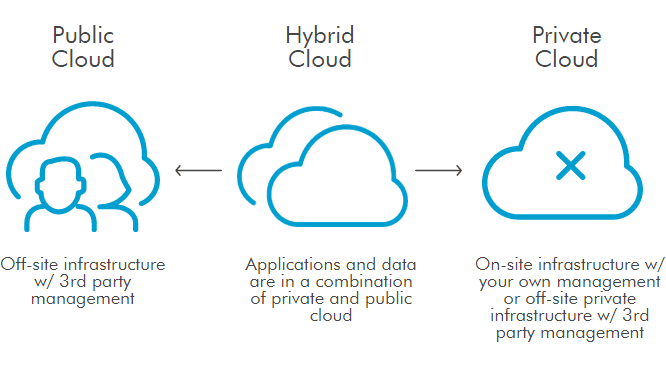Introduction to Cloud Computing
Simply put, cloud computing is the delivery of computing services—including servers, storage, databases, networking, software, analytics, and intelligence—over the Internet (“the cloud”) to offer faster innovation, flexible resources, and economies of scale. You typically pay only for cloud services you use, helping you lower your operating costs, run your infrastructure more efficiently, and scale as your business needs change.

IaaS
SaaS
PaaS
Infrastructure as a Service
Software as a Service
Platform as a Service
Infrastructure as a Service, sometimes abbreviated as IaaS, contains the basic building blocks for cloud IT and typically provide access to networking features, computers (virtual or on dedicated hardware), and data storage space. Infrastructure as a Service provides you with the highest level of flexibility and management control over your IT resources and is most similar to existing IT resources that many IT departments and developers are familiar with today.
Software as a Service provides you with a completed product that is run and managed by the service provider. In most cases, people referring to Software as a Service are referring to end-user applications. With a SaaS offering you do not have to think about how the service is maintained or how the underlying infrastructure is managed; you only need to think about how you will use that particular piece software. A common example of a SaaS application is web-based email where you can send and receive email without having to manage feature additions to the email product or maintaining the servers and operating systems that the email program is running on.
Platforms as a service remove the need for organizations to manage the underlying infrastructure (usually hardware and operating systems) and allow you to focus on the deployment and management of your applications. This helps you be more efficient as you don’t need to worry about resource procurement, capacity planning, software maintenance, patching, or any of the other undifferentiated heavy lifting involved in running your application.
Cloud Computing Deployment Models
Public
It may be owned, managed, and operated by a business, academic, or government organization, or some combination of them.
Services are delivered over a network which is open for public usage.
Private
Exclusive user by a single organization comprising multiple consumers (e.g. business units).
The platform for cloud computing is implemented on a cloud-based secure environment that is safeguarded by a firewall which is under the governance of the IT department that belongs to the particular customer.
Hybrid
- The cloud infrastructure is a composition of two or more distinct cloud infrastructures (private,community, or public) that remains unique entities, but are bound together by standardized or proprietary technology that enables data and application portability.
Community
Provisioned for exclusive user by a specific community of consumers from organizations that have shared concerns.
It may be owned, managed, and operated by one or more of the organizations in the community, a third party, or some combination of them and it may exist on or off premises.
The setup is mutually shared between many organizations that belong to a particular community.

Credits: Microsoft Azure ,Amazon AWS, U.S DOI, Salesforce








